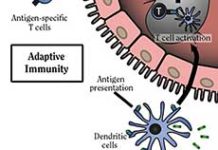A phase I TRESR study represents the most comprehensively analyzed, prospectively selected cohort of tumours treated with ATR inhibitor monotherapy to date. The safety and tolerability profile of camonsertib was consistent with a highly selective and potent ATR inhibitor, and preliminary antitumour activity was demonstrated in heavily pre-treated tumours across a range of histologic types and enrolment gene alterations.
Clinical benefit was highest in ovarian cancer, in tumours with biallelic loss of function (LOF) alterations and in patients with molecular responses. The findings are published by Dr. Timothy A. Yap of the Department of Investigational Cancer Therapeutics, The University of Texas MD Anderson Cancer Center in Houston, TX, US, and colleagues on 5 June 2023 in the Nature Medicine.
Loss of specific components of the DNA damage response (DDR) machinery results in distinct forms of genomic instability. The ATR kinase plays an integral role in the DDR by triggering a cascade of events in response to DNA damage and replication stress. Targeting DDR defects through synthetic lethality is a clinically validated approach for the treatment of cancer. This approach is exemplified by PARP inhibitors, which have received regulatory approval for treatment of patients with multiple tumour types with BRCA1 or BRCA2 LOF mutations and other selected alterations in different settings.
In preclinical and early clinical studies, ATR inhibition has been shown to be synthetically lethal with LOF of the ATM kinase. Although early clinical studies investigating ATR inhibition in tumours harbouring ATM mutations or lacking ATM protein expression have shown preliminary signals of antitumour activity, the optimal method for identifying ATM LOF in a broader population remains to be established.
Multiple ATR inhibition sensitising cancer alterations have been proposed by means of RNA interference-enabled or CRISPR–Cas9-enabled forward chemogenomic screening. The study team used these chemogenomic CRISPR-enabled screen datasets, together with internal and published preclinical validation data, to identify ATR inhibition sensitising DDR alterations as the rational basis for patient selection for treatment with camonsertib.
The primary objectives of the phase I TRESR study of camonsertib in patients with DDR biomarker-selected advanced solid tumours were to assess safety and tolerability and to propose a recommended phase 2 dose. Secondary and exploratory objectives were to determine antitumour activity, pharmacokinetics, pharmacodynamics, predictive biomarkers and circulating tumour DNA (ctDNA) dynamics.
A key requirement for study eligibility was the presence of an ATR inhibition sensitising gene alteration (LOF of ATM, ATRIP, BRCA1, BRCA2, CDK12, CHTF8, FZR1, MRE11, NBN, PALB2, RAD17, RAD50, RAD51B/C/D, REV3L, RNASEH2A, RNASEH2B or SETD2). Several of the eligibility genes, such as SETD2 and RNASEH2B, are distinct from the canonical homologous recombination repair genes associated with sensitivity to PARP inhibition.
Pre-planned translational analyses were designed to define the context in which solid tumours are sensitive to camonsertib, including tumour type and genomic profile, test the hypothesis that biallelic LOF of the gene alteration would enrich for clinical benefit to camonsertib, and define if early ctDNA dynamics predict clinical outcomes to camonsertib.
In the article published in the Nature Medicine, the study investigators report the results from module 1 of this ongoing phase I study of the ATR inhibitor camonsertib (RP-3500) in 120 patients with advanced solid tumours harbouring LOF alterations in DDR genes, predicted by chemogenomic CRISPR screens to sensitise tumours to ATR inhibitor.
Camonsertib was well tolerated; anaemia was the most common drug-related toxicity with 32% grade 3. Preliminary RP2D was 160 mg weekly on days 1–3. Overall clinical response, clinical benefit and molecular response rates across tumour and molecular subtypes in patients who received biologically effective doses of camonsertib were 13% (in 13 of 99), 43% (in 43 of 99) and 43% (in 27 of 63), respectively.
The authors concluded that the results of the TRESR study highlight the utility of pre-clinical results from chemogenomic CRISPR–Cas9 screens and small-scale validation experiments for informing patient enrolment and stratification in studies based on principles of synthetic lethality, and the testable hypotheses generated have clear implications for the development of ATR inhibitors and other DDR targeted agents. Multiple clinical studies of camonsertib alone and in combination with other therapies are ongoing, to further refine the subgroups of patients in whom camonsertib is most active.
The study was funded by Repare Therapeutics, Inc. The Precision Oncology Decision Support Group at The University of Texas MD Anderson Cancer Center provided genomic decision support through prospective annotation of all genomic alterations on NGS testing at study enrolment.
Reference
Yap TA, Fontana E, Lee EK, et al. Camonsertib in DNA damage response-deficient advanced solid tumors: phase 1 trial results. Nature Medicine; Published online 5 June 2023. DOI: https://doi.org/10.1038/s41591-023-02399-0





